Team Pow Wow Dancing is another relatively new addition to the pow wow celebration. Generally, three or four members who make up a team all dance in the same style. They must synchronize their steps. Team Dancers are judged on their synchronization, their outfits, how well they look together and how well their steps are put together. Team Pow Wow Dancers »»
Author Archives: Raven
Team Pow Wow Dancers
The gourd dance and gourd dance rattles
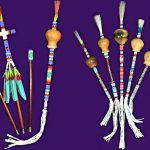
The Gourd Dance is not an intertribal or competition “Pow Wow Style” of dance. Gourd Dances are held regularly by several groups especially in Oklahoma. Today the dance is being done at some Pow Wows before, after, and between intertribal dancing.
The Round Dance
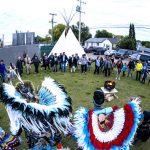
The Round Dance was in earlier times known as The Dance of the Slain. Women were the main performers of this dance, which allowed them to show their pride and mourning at the same time. The Round Dance »»
The Crow Hop
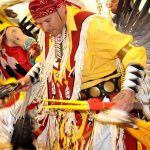
A unique form of dancing which has developed within the Indian culture is the Crow Hop. It has also been called the Skip Dance and the Jump Dance. The Crow Hop »»
Owl Dance
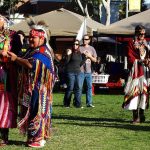
The Owl Dance is performed by couples to the beat of a hand drum. It is performed at social events and all ages participate. Owl Dance »»
Shoshone Tribe pow wow’s and events
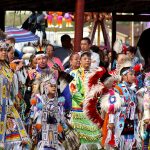
A list of Shoshone sponsored Pow Wows and Events. Shoshone Tribe pow wow’s and events »»
Seminole Tribal Fair and Pow Wow
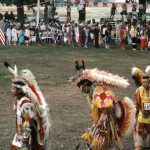
The Seminole Tribal Fair and Pow Wow is commemorating its 44th annual celebration (2015) of Native arts and culture in the new home of the Okalee Indian Village in Hollywood, Florida. Seminole Tribal Fair and Pow Wow »»
Seminole Pow Wows and Events
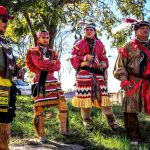
Seminole Pow Wows and Events that are open to the public. Seminole Pow Wows and Events »»
Cherokee Pow Wows
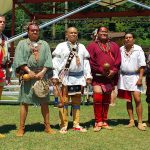
A list of pow wows and events open to the public which are sponsored by Cherokee tribes. Cherokee Pow Wows »»
Cherokee of Georgia Spring Pow Wow
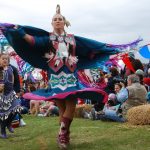
The Cherokee of Georgia Spring Pow Wow is a fun Pow Wow for the whole family. This pow wow has Arts & Crafts vendors, children’s activities, reinactors, story tellers, flute players, supplies, demonstrations and even Museum relics! Cherokee of Georgia Spring Pow Wow »»
National Pow Wow in Washington, DC
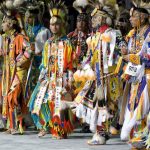
Men, women and children from more than 250 American Indian tribes gathered in a large arena to celebrate their culture and honor their military veterans at the 3rd Annual National Powwow (August 10-12) in Washington, D.C. The National Powwow is a biennial event where more than 500 native american dancers come to share their culture. National Pow Wow in Washington, DC »»
Kiowa Gourd Dance Society history and traditions
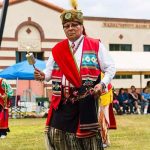
A Kiowa gentleman explains about how the Kiowa Gourd Dance Society began, who is allowed to join this society, and the Kiowa Gourd Dance Society traditions. Kiowa Gourd Dance Society history and traditions »»
Old Style Side Step Jingle Dance
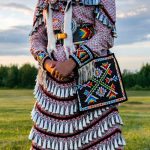
The story of the Jingle Dress Dance begins in Whitefish Bay, a reserve village located on the shores of Lake of the Woods in southwestern Ontario. Small and isolated, it is a Native community where traditional values and sensibilities still flourish. Old Style Side Step Jingle Dance »»
Hoop Dance – Pow Wow Dances
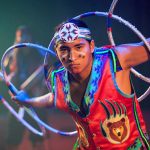
In Anishinaabe culture, a Manitou named Pukawiss, brother of Nanabozho, and born to live amongst the people, created the hoop dance. Hoop Dance – Pow Wow Dances »»
Eastern Shoshone Indian Days
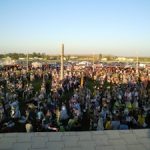
Eastern Shoshone Indian Days is Wyomings largest pow-wow and Indian Celebration. A great experience for traditional dancing, drum contests, a parade, food and Arts & Crafts. Eastern Shoshone Indian Days »»
Celebrate Salish Sea Culture with the Samish and Swinomish tribes
The Washington State Parks and Recreation Commission invites you to attend the Ninth Annual Salish Sea Native American Culture Celebration with the Samish and Swinomish tribes. The event takes place Saturday, June 7 at Deception Pass State Park on Fidalgo Island, between the cities of Oak Harbor and Anacortes. Celebrate Salish Sea Culture with the Samish and Swinomish tribes »»
Salish Pow Wows – Flathead, Kootenai
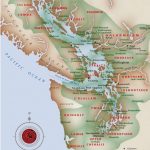
A list of pow wows and events open to the public which are sponsored by Salish tribes. Salish Pow Wows – Flathead, Kootenai »»
Black Lodge Singers
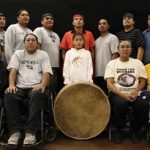
The Black Lodge Singers are one of the most respected northern style drum groups on the pow-wow circuit, highly in demand as a host drum throughout the United States and Canada. This Grammy Nominated drum group has more than thirty albums. Black Lodge Singers »»
Verdell Primeaux & Johnny Mike (Primeaux & Mike)
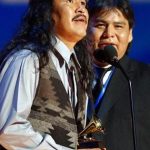
Primeaux & Mike are best known for their Native American Church and Peyote songs. In 2002 Bless the People won the Grammy for Best Native American Album and the Nammy for Best Traditional Recording. Verdell Primeaux & Johnny Mike (Primeaux & Mike) »»
R. Carlos Nakai
R. Carlos Nakai is best known for his native American flute songs. However, to become the world’s premier Native American flutist, R. Carlos Nakai had to rely more on research and innovation and less on his Navajo-Ute heritage. R. Carlos Nakai »»
Sioux Indians include the Lakota, Dakota and Nakota divisions
Souix Indians, or the great Sioux Nation as they are also known, are divided into three main divisions: the Lakota, the Dakota, and the Nakota. These divisions are based on the language dialects spoken.
The Sioux maintain many separate tribal governments scattered across several reservations and communities in the Dakotas, Minnesota, Nebraska, and also in Manitoba and southern Saskatchewan in Canada. Sioux Indians include the Lakota, Dakota and Nakota divisions »»
Sioux languages include the Lakota (or Lakhota), Dakota, and Nakota dialects
The Sioux Language Dialects
The Souix language, also known as the Dakotan language, is an amalgam of three groups of seven different tribes (known as the Great Sioux Nation) that speak three different languages, with several dialects among them. The Siouan languages are a family of Native American languages indigenous to North America. Sioux languages include the Lakota (or Lakhota), Dakota, and Nakota dialects »»
Sioux Nation History Timeline
Souix History, was passed down from generation to generation by tribal historians, elders, and oral storytellers. A written account was made of the important events each year with pictographs painted on hides, which were called winter counts or story robes. Sioux Nation History Timeline »»
Sioux Culture: Games, Ceremonies, Religion, Social Organization
In Sioux culture, no decision would be made without reference to the will of the seven generations previous and in consideration for its effects and consequences for the seven generations following. Sioux Culture: Games, Ceremonies, Religion, Social Organization »»
140th Annual Winnebago Pow Wow
The 140th annual homecoming celebration of the Winnebago Tribe of Nebraska will be July 27 through 30 at Veterans Memorial Park on U.S. 75 east of Winnebago, Nebraska. 140th Annual Winnebago Pow Wow »»
Standing Arrow Pow Wow at Elmo, Montana – 3rd weekend in July
This year the powwow begins on July 17 (3RD WEEKEND IN JULY) with a new event called Strengthen My Nation Youth Day On July 17. Pearl Yellowman, from Confederated Salish and Kootenai Tribal Health, is in charge of the event and said there will be positive activities for kids as they transition into the powwow weekend. Standing Arrow Pow Wow at Elmo, Montana – 3rd weekend in July »»
6 pow wows near Yellowstone National Park
Yellowstone National Park is the most popular national park in the United States. While Yellowstone is known primarily for its many hot springs and geysers, spectacular scenery, and wildlife, there are many other interesting things to see and do in the area. One of them is to attend an authentic Native American powwow. 6 pow wows near Yellowstone National Park »»
2018 Gathering of Nations Pow Wow Flyer
Gathering of Nations Pow Wow held in the 4th week of April in New Mexico claims to be the largest pow wow in North America. 2018 Gathering of Nations Pow Wow Flyer »»
Crow Fair, Pow Wow and All Indian Rodeo
The Crow Fair Pow Wow and All Indian Rodeo is held the 3rd weekend in August at Crow Agency, Montana. Roughly 50,000 people attend this event, which is open to the public. More than 1,000 tipis are set up on the grounds, plus hundreds more modern tents, campers, and RVs. Crow Fair, Pow Wow and All Indian Rodeo »»
Crow Fair Tipi encampment area has been used for generations.
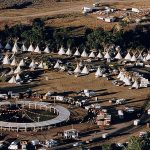
Crow Fair starts in earnest today as the first of two parades winds through town and into the encampment of more than 1,000 tepees. Crow Fair Tipi encampment area has been used for generations. »»
Zuni Dances and Festivals
A list of Zuni sponsored dances and festivals that are open to the public. Zuni Dances and Festivals »»
Zuni Ancient Way Fall Arts Market & Traditional Harvest Dance
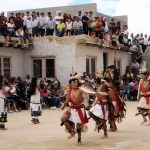
The Zuni Harvest Dance and Ancient Way Fall Arts Market boasts over 15 years of celebrating the fall harvest and promoting world-famous Zuni arts. It continues to attract visitors from around the country and sometimes around the World! Zuni Ancient Way Fall Arts Market & Traditional Harvest Dance »»
Hopi Reservation Dances, Festivals, and Area Attractions
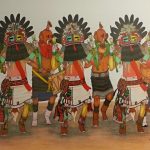
The Hopi Indians and their ancestors are Native Americans who have lived in Northwestern Arizona for thousands of years. Information suggests that the name ‘Hopi’ is translated to mean ‘peaceful person.’ Hopi Reservation Dances, Festivals, and Area Attractions »»
San Manuel Band of Serrano Mission Indians Pow Wow
In the spirit of togetherness and affirmation of Native American culture, the 24nd annual San Manuel Band of Serrano Mission Indians Pow Wow will be held on October 11th, 12th, and 13th at California State University, San Bernardino, California. San Manuel Band of Serrano Mission Indians Pow Wow »»
California Mission Pow Wows
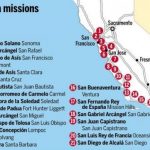
A list of pow wows and events associated with the Mission Indians of California. California Mission Pow Wows »»
47th Annual Seminole Tribal Fair and Pow Wow Flyer
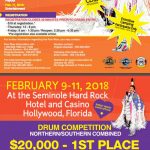
The 47th Annual Seminole Tribal Fair and Pow Wow includes an alligator wrestling show and more. 47th Annual Seminole Tribal Fair and Pow Wow Flyer »»
Pueblo Feast Days Etiquette and Calendar of Events
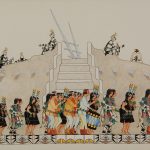
The Pueblo Feast days were introduced by the Spanish colonization and represent the celebration of the Patron Saints of the Catholic religion.
Most Feast Days also coincide with the Traditional Pueblo religion, which allows the people of these communities to practice both the Catholic and Pueblo Religion. Pueblo Feast Days Etiquette and Calendar of Events »»
The Kiowa Gourd Dance was once part of the Sun Dance
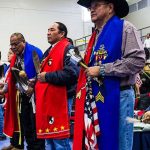
Inspired both by legend and history, the gourd dance ceremony is an essential part of the Kiowa people.
The first thing to know about the gourd dance is that unless you’re Kiowa, you probably haven’t seen it—even if you think you have. The Kiowa Gourd Dance was once part of the Sun Dance »»
Wabanaki Confederacy: Abenaki, Míkmaq,Maliseet, Penobscot, Passamaquoddy
The Wabanaki Confederacy (Waponahkiyik) was between five Algonquian tribes: the Abenaki, Míkmaq (Mi’kmaq or Micmac), Penobscot (Penawapskewi), Passamaquoddy (Pestomuhkati), and Maliseet (Wolastoqiyik or Malicite) tribes. Wabanaki Confederacy: Abenaki, Míkmaq,Maliseet, Penobscot, Passamaquoddy »»
Indian symbols used on the war horse
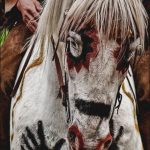
While the symbols used and their meanings varied from tribe to tribe, there were some common Indian symbols used on the war horse.
Each power symbol has its own specific meaning and the purpose for which it was used was determined by the nature of the dangerous job which the war horse would be asked to do. In this article, you will find explanations of some symbols which Indians used to decorate their war horses. Indian symbols used on the war horse »»
Ojibwa Poem: Nibi (Water)
Anishinaabekwe, the Daughters,
You are the keepers of the water.
I am Nibi… water.. the sacred source,
the blood of Aki, Mother Earth,
the force filling dry seeds to great bursting.
I am the wombs cradle.
I purify. Ojibwa Poem: Nibi (Water) »»
Ojibway Oral Teaching: Wolf and man
Boosoo (Hello).
My son, wolves were referred to as the guardian of our spirits.
Wolves are free spirits even though their packs are very organized.
A lone wolf is rarely found in the wild. Wolves are social creatures like you and I. Just as you watch over your sister so does a wolf watch his brother. Ojibway Oral Teaching: Wolf and man »»
Wovoka’s ghost dance vision
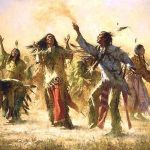
James Mooney, an ethnologist with the Bureau of American Ethnology, was sent to investigate the Ghost Dance movement in 1891.
He obtained a copy of Wovoka’s message from a Cheyenne named Black Short Nose, who had been part of a joint Cheyenne-Arapaho delegation that visited Wovoka in Nevada in August 1891.
THE MESSIAH LETTER
When you get home you must make a dance to continue five days. Dance four successive nights, and the last night keep up the dance until the morning of the fifth day, when all must bathe in the river and then disperse to their homes.
You must all do in the same way.
I, Jack Wilson, love you all, and my heart is full of gladness for the gifts you have brought me. When you get home I shall give you a good cloud [rain?] which will make you feel good.
I give you a good spirit and give you all good paint. I want you to come again in three months, some from each tribe there (in the Indian Territory).
White Buffalo Calf Woman Prophecy
This is the White Buffalo Calf Woman prophecy of the Sioux tribe.
One summer so long ago that nobody knows how long, the OcetiShakowin, the seven sacred council fires of the Lakota Oyate, the nation, came together and camped.
The sun shone all the time, but there was no game and the people were starving. Every day they sent scouts to look for game, but the scouts found nothing. White Buffalo Calf Woman Prophecy »»
Sioux Wedding Prayer
Written for a Wedding at Chamberlain – May, 1974 Sioux Wedding Prayer »»
Traditional War Stories & Wounded Knee 1973
Many of our people have forgotten the traditional way “War Stories” are used and respected in the sacred ceremonies of the people of the Sundance and Pipe, we who have always lived in the center of our turtle island. Long ago our wise ancestors understood that a powerful moment in time existed when a warrior performed a great deed and tested himself to the ultimate.
In english we call them war stories but in our own languages the story and the person chosen to tell it have names with far more meaning. War stories are actually “Warrior Stories” because they are told individually by the warrior who is bringing his actions into the circle. Traditional War Stories & Wounded Knee 1973 »»
Lakota voices in Stronghold camp defend Ghost Dancers
PINE RIDGE, S.D. – There is only the light of a quarter-moon and a canopy of shooting stars when Lakota voices in Stronghold camp say, “They are coming.”
In the distance, fourteen Lakota horseback riders, some riding bareback, are approaching on the same route that survivors of the massacre of Wounded Knee followed 112 years ago.
Here on Stronghold Table they Ghost Danced so the people would live and they were massacred. Now, the remains of men, women and children — Lakota, Paiute, Northern Cheyenne, Northern Arapaho and other tribes — are apart of this earth. Lakota voices in Stronghold camp defend Ghost Dancers »»
AIM Casualties on or near Pine Ridge Reservation, 1973-1976
The Guardians Of Oglala Nation (known by the acronym GOONs) were thugs hired by then Tribal Chairman Dick Wilson, paid with federal money, and trained by FBI/CIA personel. Many were actually off-duty BIA police. It is alleged the Goon Squad (as they were commonly known) murdered or caused the death of nearly seventy AIM supporters on the Pine Ridge Reservation between 1973-1976. AIM Casualties on or near Pine Ridge Reservation, 1973-1976 »»
Seven Fires Prophesy of the Anishinabe (Ojibwa/Ojibwe)
Seven prophets came to the Anishinabe. They came at a time when the people were living a full and peaceful life on the North Eastern coast of North America. These prophets left the people with seven predictions of what the future would bring.
Each of the prophecies was called a fire and each fire referred to a particular era of time that would come in the future. Thus, the teachings of the seven prophets are now called the “Seven Fires.” Seven Fires Prophesy of the Anishinabe (Ojibwa/Ojibwe) »»
Red Cloud’s last words to his people
Red Cloud gave this farewell address to the Lakota people on July 4, 1903, as he anticipated death approaching. Red Cloud’s last words to his people »»
What is the meaning of the words Wha-she-sho-wee-ko?
Question:
Would you know the meaning of the words Wha-she-sho-wee-ko? A Lakota Souix I know said it meant crazy white man. But someone else said complete idiot. I’m beginning to think the latter. But I was watching the series Into the West and saw the subtitles and everytime they used the word wahsee, white was the subtitle. Which is it?
–Submitted by Charles B.
Population of Indians on the rise, Utah’s percentage exceeds U.S. average
Utah is among 19 states in which the American Indian population exceeds the U.S. proportion of 1.5 percent, and among four Southwestern states in which American Indians make up the majority of the population in certain counties, according to U.S. Census figures released today.
The figures from the 2000 Census also show that the number of Indians is increasing at a faster rate than the overall U.S. population, and the majority of Indians live in the West. Population of Indians on the rise, Utah’s percentage exceeds U.S. average »»
Phoenix is 1st in share of Indians among top 10 cities in the nation
Phoenix has the highest proportion of American Indians among the top 10 cities in the nation.
But increasing urbanization doesn’t necessarily mean Indians are losing touch with their ancestral homelands and cultures, a leading Indian academician said Tuesday.
A Census 2000 summary released today shows that the population of 35,000 American Indians and Alaska Natives within the city limits of Phoenix represents an Indian component of 2.7 percent. No count was available for other areas of the Valley. Phoenix is 1st in share of Indians among top 10 cities in the nation »»
Carter Camp Obituary
Carter Camp, Ponca (August 18, 1941 – December 27, 2013) was an American Indian Movement activist. Camp played a leading role in the 1972 Trail of Broken Treaties that traveled to Washington, DC, where protesters took over the Department of Interior building. Camp was also one of the organizers of the 1973 Wounded Knee occupation on the Pine Ridge Indian Reservation in South Dakota.
In his later years Camp opposed the construction of the Keystone Pipeline, an oil pipeline proposed from the Western Canadian Sedimentary Basin in Alberta to refineries in Illinois and Texas. Carter Camp Obituary »»
Yurok Religious Beliefs and Burial Customs
Yurok myths ascribed creation to Wohpekumew, “widower across the ocean.” Their world was thought to float on water, and, as Kroeber related, “at the head of the river in the sky, where the Deerskin dance is danced nightly, are a gigantic white coyote and his yellow mate.”
Yurok dances expressed their beliefs. The motive of such dances was to renew or maintain the world, beginning with the reciting of long formula, after which a dance ensued. Yurok Religious Beliefs and Burial Customs »»
Frank Blackhorse
Frank Blackhorse (Francis DeLuca, Frank Leonard Deluca, Cherokee) is one of several aliases used by a member of the American Indian Movement. He is perhaps best known for his participation in the Wounded Knee incident, particularly his role in the shootout that left two FBI and one American Indian dead and for becoming a fugitive on the run who fled to Canada shortly after.
Much of Blackhorse’s early and personal life is shrouded in mystery. According to one source, Frank Blackhorse was born Frank Leonard Deluca. However, another source identifies Frank Blackhorse as being born Francis Deluca.
Blackhorse has an incredibly long list of aliases which he uses. The list of these aliases, include Francis Blackhorse, Frank DeLuca, Bruce Johnson, Richard Leon High Eagle, Richard Tall Bull, Mike Houston, Michael Houston, Teddy Louis and Teddy Lewis. Frank Blackhorse »»
Edgar Bear Runner, Oglala Sioux
Edgar Bear Runner, Oglala Lakota (May 28 1951 – ) was born in Porcupine, South Dakota, to mother Winnifred “Winni” Alice Janis and father Oscar Bear Runner.
Bear Runner was in his early 20s during Wounded Knee and the reign of terror on Pine Ridge Reservation, of which he said, “Our elders, our parents and grandparents in our community had called on this family, known to us as the American Indian Movement. The American Indian Movement was invited by the traditional community from the Pine Ridge Indian Reservation to provide aid, to provide a sense of security for people who felt that the law had abandoned them.” Edgar Bear Runner, Oglala Sioux »»
Wesley Bad Heart Bull
Just one month before the Wounded Knee siege, Wesley Bad Heart Bull, Oglala Sioux, (June 10, 1952-January 27, 1973) was the victim of a murder in which Darrell Schmitz stabbed Bad Heart Bull to death outside a bar. This was Schmidt’s second assault on a Native American.
A friend of Bad Heart Bull claimed Schmidt had said earlier in the evening “he was going to kill him an Indian.”
Schmidt was charged with second degree involuntary manslaughter, a common charge given to whites responsible for the deaths of Native Americans–a charge that many members of the Sioux and AIM found outrageous. Wesley Bad Heart Bull »»
Clyde Bellecourt, Cofounder of AIM
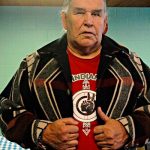
Clyde Bellecourt or Nee-gon-we-way-we-dun which means “Thunder Before the Storm.” White Earth Ojibwe (born May 8, 1936) was a cofounder of AIM in 1968. He was the group’s first chairman. He continues to direct national and international AIM activities, is a coordinator of the National Coalition on Racism in Sports and the Media, and leads Heart of the Earth, Inc., an Interpretive Center in Minneapolis. Clyde Bellecourt, Cofounder of AIM »»
Reservation programs administered by the Bureau of Indian Affairs and the Indian Health Service
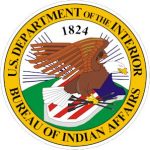
Previous Views: 9,218
Many Native Americans who live on reservations must deal with the federal government through two agencies: the Bureau of Indian Affairs and the Indian Health Service. Reservation programs administered by the Bureau of Indian Affairs and the Indian Health Service »»
Reservations: Land Tenure and Federal Indian Law
Previous Views: 8,568
Reservation Economics
With the establishment of reservations, tribal territories diminished to a fraction of original areas and indigenous customary practices of land tenure sustained only for a time, and not in every instance.
Instead, the federal government established regulations that subordinated tribes to the authority, first, of the military, and then of the Bureau (Office) of Indian Affairs. Under federal law, the government patented reservations to tribes, which became legal entities that at later times have operated in a corporate manner. Reservations: Land Tenure and Federal Indian Law »»
Reservation Beginnings
Previous Views: 17,220
In 1851, the United States Congress passed the Indian Appropriations Act which authorized the creation of Indian reservations in modern day Oklahoma. Relations between settlers and natives had grown increasingly worse as the settlers encroached on territory and natural resources in the West.
By the late 1860s,President Ulysses S. Grant pursued a stated “Peace Policy” as a possible solution to the conflict. The policy included a reorganization of the Indian Service, with the goal of relocating various tribes from their ancestral homes to parcels of lands established specifically for their inhabitation. Reservation Beginnings »»
Russell Means Obituary
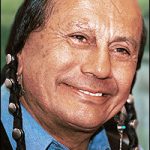
Previous Views: 6,964
Russell C. Means, the charismatic Oglala Sioux who helped revive the warrior image of the American Indian in the 1970s with guerrilla-tactic protests that called attention to the nation’s history of injustices against its indigenous peoples, died on Monday, October 29, 2012, at his ranch in Porcupine, S.D., on the Pine Ridge Indian Reservation. He was 72. Russell Means Obituary »»
Reservation Poverty
Previous Hits: 10943
The quality of life on some reservations is comparable to that in many third world countries, with issues of infant mortality, life expectancy, nutrition and poverty, and alcohol and drug abuse. For example, Shannon County, South Dakota, home of the Pine Ridge Indian Reservation, is routinely described as one of the poorest counties in the nation. Reservation Poverty »»
Ellen Moves Camp Obituary
Ellen Moves Camp, known along with Gladys Bissonnette as the “Grandmas of the American Indian Movement (AIM),” passed April 5 at the age of 77 on Pine Ridge Reservation in South Dakota.
Moves Camp and Bissonnette played key roles before, during and after the 1973 occupation of Wounded Knee, which moved the Indigenous struggle into the view of the whole world.
The struggles of Indigenous people globally are illustrated in the story of Ellen Moves Camp and Wounded Knee. Ellen Moves Camp Obituary »»
Theodore “Ted” Lyle Means Obituary
A burial ceremony for Ted Means, 65, Lakota, who passed away last Wednesday in Rapid City, South Dakota will began today 9 am cst, at Sinte Gleska University Multi-Purpose Building on the Rosebud Indian Reservation.
Means is survived by his brothers Russell and Bill.
All three brothers have been involved with leadership positions within the American Indian Movement. Theodore “Ted” Lyle Means Obituary »»
Herbert (Herb) Powless Obituary
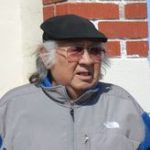
Herbert George Powless (Oneida) began his journey to the Creator’s land, on January 30, 2018.
Herb was born on February 22, 1937, to Margaret (Stevens) Powless and Mark Powless. Herb joined the U.S. Marine Corps. when he was 15 years old.
He is a veteran of the Korean War. Herb worked at American Motors Corporation in Milwaukee and was one of the members of the Labor Union and involved in negotiating union contracts. Herb joined the ranks of his brothers, and became an iron worker. Herbert (Herb) Powless Obituary »»
Native Tribes of the Great Lakes Region
Seventeen American Indian tribes originated around the Great Lakes Region, and later migrated to other areas. Here is a summary of those tribes. Meaning of the tribal name is in brackets, where known. Native Tribes of the Great Lakes Region »»
Hiking Canyon of Wonder and Superstition in Palm Springs, CA
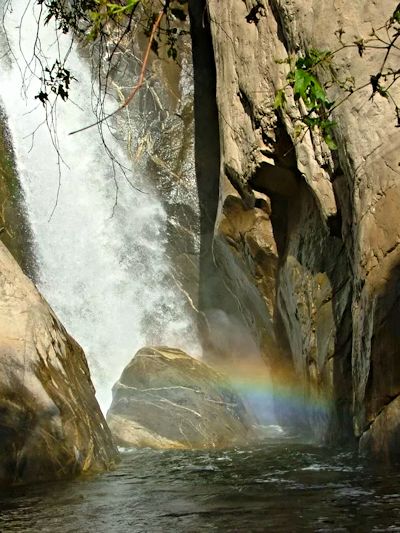
After a 30-year closure, the lovely canyon named after a banished Cahuilla shaman called Tahquitz has reopened on a limited basis to hikers in Palm Springs.
At the new Tahquitz Canyon Visitor Center, hikers are ushered into a screening room for the “Legend of Tahquitz Canyon” video, then led onto the trail.
Groups wind past ancient rock art, diverse desert flora and sometimes wildlife, including the phainopepla, a small bluish-black bird of the Southwest. Mountain goats are often seen.
Hiking Canyon of Wonder and Superstition in Palm Springs, CA »»
Emergence to the 5th World – A Hopi Prophecy
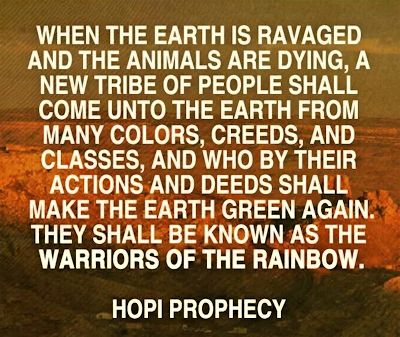
Original views: 2240
Hopi prophesy states that World War III will be started by those peoples who first revealed the light (the divine wisdom or intelligence) in the other old countries (India, China, Islamic Nations, Africa.) Emergence to the 5th World – A Hopi Prophecy »»
Blind Joe Amos, first Mashpee Wampanoag Preacher
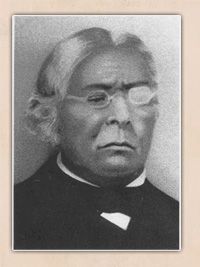
Blind Joe Amos was the first ordained Mashpee Wampanoag Indian minister. He was a pastor with substantial credentials, a reputation for great sermons and a propensity to fiddle. Blind Joe Amos, first Mashpee Wampanoag Preacher »»
Black Indians of Wampanoag and African Heritage
Black Indians of Wampanoag and African heritage who take pride in their tribal heritage speak up about their struggle to be recognized as African Native Americans dealing with race, skintone, identity and acceptance as Black Indians.
“We Still Live Here – Âs Nutayuneân” by Anne Makepeace tells the story of how the Wampanoag are bringing their language and their culture back. Black Indians of Wampanoag and African Heritage »»
John Sassamon, the Praying Indian and traitor
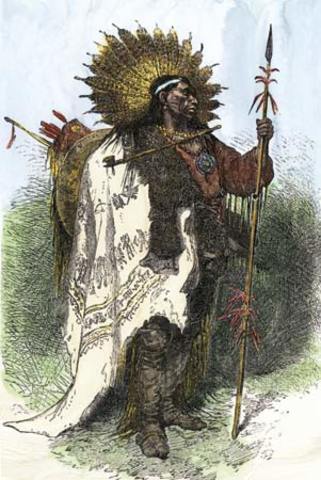
Sassamon (Christian name John) was a Christian Indian raised in Natick, one of the “praying towns” of the Wampanoag tribes. He was educated at Harvard College. John Sassamon, the Praying Indian and traitor »»
King Philip’s War (Metacom’s Rebellion)
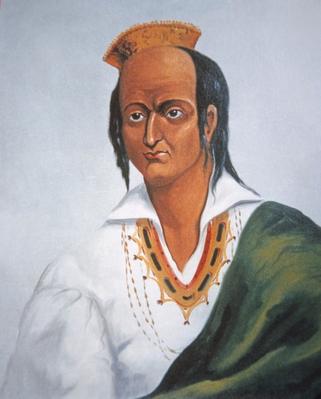
King Philip’s War (also known as the First Indian War, Metacom’s War, Metacomet’s War, Pometacomet’s Rebellion, or Metacom’s Rebellion) was an armed conflict in 1675–78 between American Indian inhabitants of the New England region of North America versus New England colonists and their Indian allies.
The war is named for Metacom or Metacomet, the Wampanoag chief who adopted the name Philip because of the friendly relations between his father Massasoit and the Mayflower Pilgrims. King Philip’s War (Metacom’s Rebellion) »»
Saint Peter the Aleut
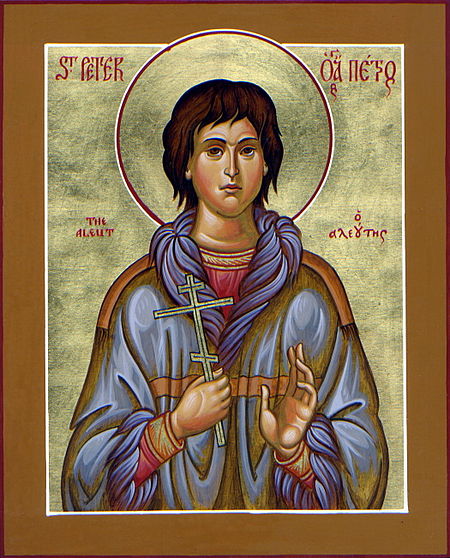
Cungagnaq (date of birth unknown – d. 1815) is venerated as a martyr and saint and is known as Saint Peter the Aleut by some jurisdictions of the Eastern Orthodox Church.
He was allegedly a native of Kodiak Island (Alutiiq or Sugpiaq), and is said to have received the Christian name of Peter when he was baptized into the Orthodox faith by the monks of St. Herman’s missionaries operating in the north.
Peter the Aleut is purported to have been captured by Spanish soldiers near San Pedro and tortured and killed at the instigation of Roman Catholic priests either there or at a nearby location. Saint Peter the Aleut »»
American Indian Movement (AIM)
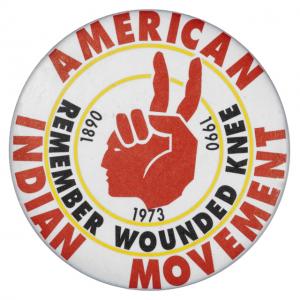
The best known of all Indian Power groups is the American Indian Movement, commonly known by it’s initials. AIM was formed in 1968 by two Chippewas, Dennis Banks and George Mitchell, to combat poverty and unemployment and protest police brutality.
AIM burst onto the international scene with its seizure of the Bureau of Indian Affairs headquarters in Washington, D.C., in 1972 and the 1973 standoff at Wounded Knee, South Dakota, on the Pine Ridge Indian Reservation.
In the decades since AIM’s founding, the group has led protests advocating Indigenous American interests, inspired cultural renewal, monitored police activities and coordinated employment programs in cities and in rural reservation communities across the United States.
AIM has often supported other indigenous interests outside the United States, as well.
Here is a summary of their most publicized moments and some of the key members of this activist organization. American Indian Movement (AIM) »»
AIM Patrol
Formed in August of 1968, the American Indian Movement Patrol (AIM Patrol) was a citizens’ patrol created in response to police brutality against American Indian people in Minneapolis.
Patrollers observed officers’ interactions with American Indians and offered mediators that community members could call on for help. As of 2016, a similar but separate group operates under the same name. AIM Patrol »»
Iroquois Old Moccasin Dance
The Iroquois Old Moccasin Dance was originally called an Apple Dance, which was a ceremony dance (the Fruit Dance). The purpose of this dance was changed throughout time to what we now know as the Old Moccasin Dance. Iroquois Old Moccasin Dance »»
The Iroquois: People of the Long House
A Documentary Short on the Iroquois Indian’s lifestyle inside a longhouse created by Westbrook Shortell, Daniel Jackson, Dan Scharfenberger and Nicholas Varga. The Iroquois: People of the Long House »»
Native American Culture Groups (1491-1607)
This video lesson for US History students summarizes the key characteristics of five major Native American culture groups in North America at the time of European contact. Native American Culture Groups (1491-1607) »»
The Wampanoag Lifestyle
The Wampanoag are a Native American tribe from the northeastern United States.
They were there when the Pilgrims arrived in 1620 and they are still there today. Learn about their lives long ago by meeting two modern-day Wampanoag girls. The Wampanoag Lifestyle »»
Types of Ancient Native American Homes
This native american video shows a collection of Native American houses sometimes called “Indian homes”.
These are extremely rare to see today, as most (almost all) Native Americans live in modern houses and apartments.
These are recreated based on information from various tribes. Types of Ancient Native American Homes »»
Ancient History: Mystery of the Anasazi
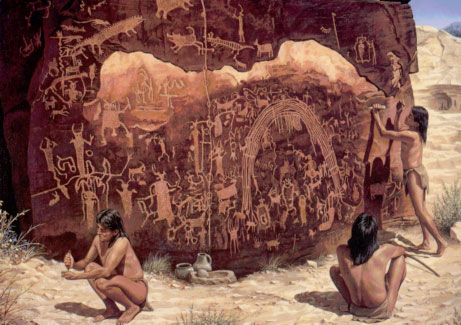
One of the most popular and fascinating features of the southwest’s Canyon Country is the remains of the prehistoric Anasazi Indian civilization. The Anasazi thrived in the region for nearly 1,000 years leaving evidence of their extraordinary masonry talents everywhere.
The zenith of the Anasazi culture was reached in Chaco Canyon during the years 900-1100 C.E. Ancient History: Mystery of the Anasazi »»
Abenaki History Overview
Native Americans have occupied northern New England for at least 10,000 years. Abenaki History shows no proof these ancient residents were ancestors of the Abenaki, but there is no reason to think they were not.
The Abenaki lived in a manner similar to Algonquin in southern New England. Since they relied on agriculture (corn, beans, and squash) for a large part of their diet, villages were usually located on the fertile floodplains of rivers. Abenaki History Overview »»
Orono, Penobscot Chief
Orono was a Penobscot chief, born on the Penobscot River in Maine in about 1688. According to one tradition he was a descendant of Baron de Castine, and although Williamson, who seems to have seen him and was familiar with his later career, is disposed to reject this story.
From Orono’s own admissions it is possible that he was a son of Castine’s daughter, who married a Frenchman, and with her children was taken captive in 1704.
Nickolar, who was related to Orono by marriage, asserted, according to Williamson, that Orono was in some way related to old Castine; moreover he asserts that Orono was not of full blood, but part white,”a half breed or more.” Orono, Penobscot Chief »»
Don Luis a.k.a. Opechancanough
Opechancanough or Opchanacanough (1543?-1644) was a tribal chief of the Powhatan Confederacy of what is now Virginia in the United States, and its leader from 1618 until his death in 1644. His name meant “He whose Soul is White” in the Algonquin language. Don Luis a.k.a. Opechancanough »»
Acoma Pueblo Indians, oldest continuously inhabited village in US
The Acoma Pueblo, also known as “Sky City”, is a Native American pueblo built on top of a 367-foot (112 m) sandstone mesa in the U.S. state of New Mexico. The Pueblo, believed to have been established prior to the 10th century, was chosen in part because of its defensive position against raiders. It is regarded as the oldest continuously inhabited community in the United States. Acoma Pueblo Indians, oldest continuously inhabited village in US »»
R.C. Gorman, painter and sculptor bio
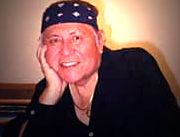
R.C. Gorman
R.C. Gorman is considered by many to be the premiere Indian artist. A man of today in every sense, his art reflects the racial memory and experience of an ancient people that remains timeless and universal. R.C. Gorman, painter and sculptor bio »»
1830 Treaty of Prairie du Chien
The 1830 Treaty of Prairie du Chien set aside 320,000 acres of potentially valuable land west of Lake Pepin for so-called “half-breed” members of the Dakota nation. The move set off a series of events that would enrich a number of early Minnesotans—none of them of Indian heritage. 1830 Treaty of Prairie du Chien »»
Pipestone Indian Boarding School
The Pipestone Indian Boarding School opened in 1893 as a sister school to Flandreau, fifteen miles to the east of Flandreau, but located within Minnesota. Pipestone Indian Boarding School »»
Flandreau Indian Boarding School
As the banished Minnesota Dakota people gathered in their new home in South Dakota, they expressed an interest in the establishment of a school.
This desire was also corroborated by the non-Indian residents of Flandreau, South Dakota, who were equally anxious to have a government boarding school built near their town. Plans began to develop for the Flandreau Indian Boarding School. Flandreau Indian Boarding School »»
Dispersion of the Minnesota Sioux to the Dakotas
In 1820, the U.S. government established a Dakota Agency for the
Santee at Fort Snelling, Minnesota. It served as a regional jurisdictional center until
1854, when its functions were assumed by the new Lower Agency (near Morton) and the
Upper Agency (near Granite Falls).
These agencies disappeared when Congress terminated federal administration in Minnesota after the Dakota War of 1862, and decided to move the troublemakers and those most likely to rebel to remote locations, thus separating the various Sioux tribes. They transferred the Minnesota Sioux to the Dakotas. Dispersion of the Minnesota Sioux to the Dakotas »»
Divisions of the Sioux Nation
There were once hundreds of Sioux Bands. Today there are 18 Sioux First Nations in Canada and 17 Tribes in the United States who are the descendants of the Ocheti Sakowin, or Sioux Nation. Divisions of the Sioux Nation »»
Dad finds Thanksgiving history lesson lacking
Previous Views 1767
Well, Whatever
Today’s dissertation is brought to you by the letter ‘D,’ as in “discovery, and other ‘dis’ words like “disrespect,” “disgrace” and “displace.”
Yeah, words like dat.
But let me begin this discourse where it began, with a very disappointing visit to the nearby elementary school where my stepdaughter, Frances, is a distinguished fifth-grader. Dad finds Thanksgiving history lesson lacking »»
Walker River Indian Reservation
The Walker River Indian Reservation is home to the Walker River Paiute Tribe, a federally recognized tribe of Northern Paiute people in central Nevada. Walker River Indian Reservation »»
Yomba Reservation, home to Western Shoshone
The Yomba Reservation in central Nevada is home to Western Shoshone people of the Yomba Shoshone Tribe. Yomba Reservation, home to Western Shoshone »»
Winnemucca Colony
The Winnemucca Colony is a reservation for the federally recognized tribe of Western Shoshone and Northern Paiute Indians in northwestern Nevada. Winnemucca Colony »»
Summit Lake Indian Reservation
The Summit Lake Indian Reservation in Nevada is the home of Northern Paiute Indians. Summit Lake Indian Reservation »»
Reno-Sparks Indian Colony Trust Lands
Reno-Sparks Indian Colony began as privately held land and eventually became trust land held as a sort of Indian reservation for the Reno-Sparks Indian Colony in and near Reno, Nevada. It is home to Paiute, Shoshone, and Washoe Indians. Reno-Sparks Indian Colony Trust Lands »»
Moapa Indian Reservation
The Moapa Indian Reservation is located about 55 miles northeast of Las Vegas, Nevada near Moapa. Moapa Indian Reservation »»

